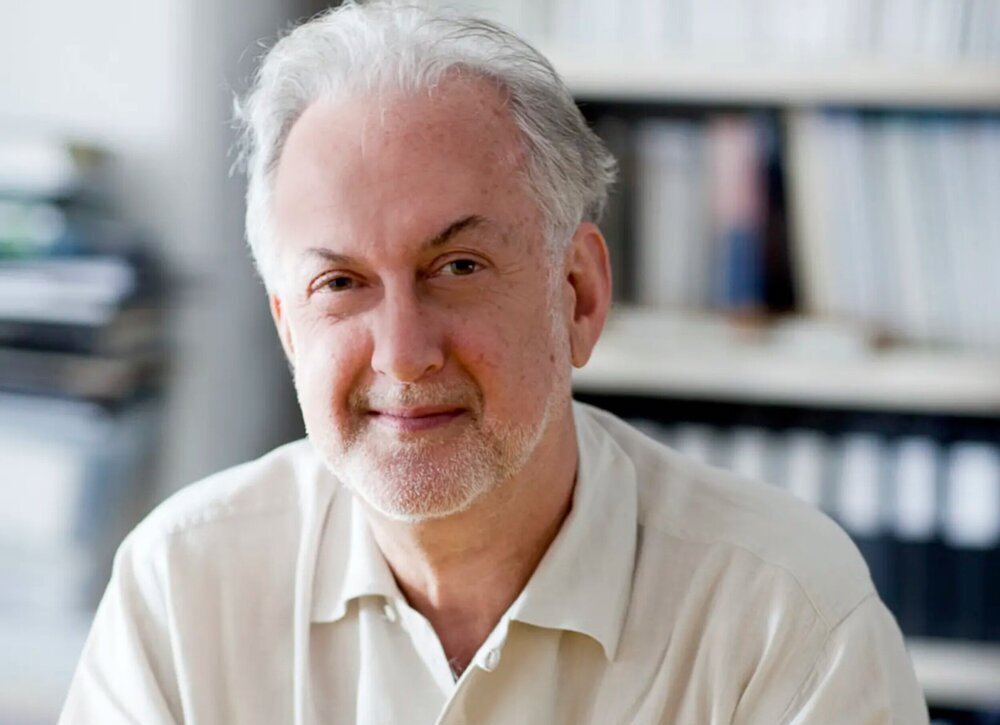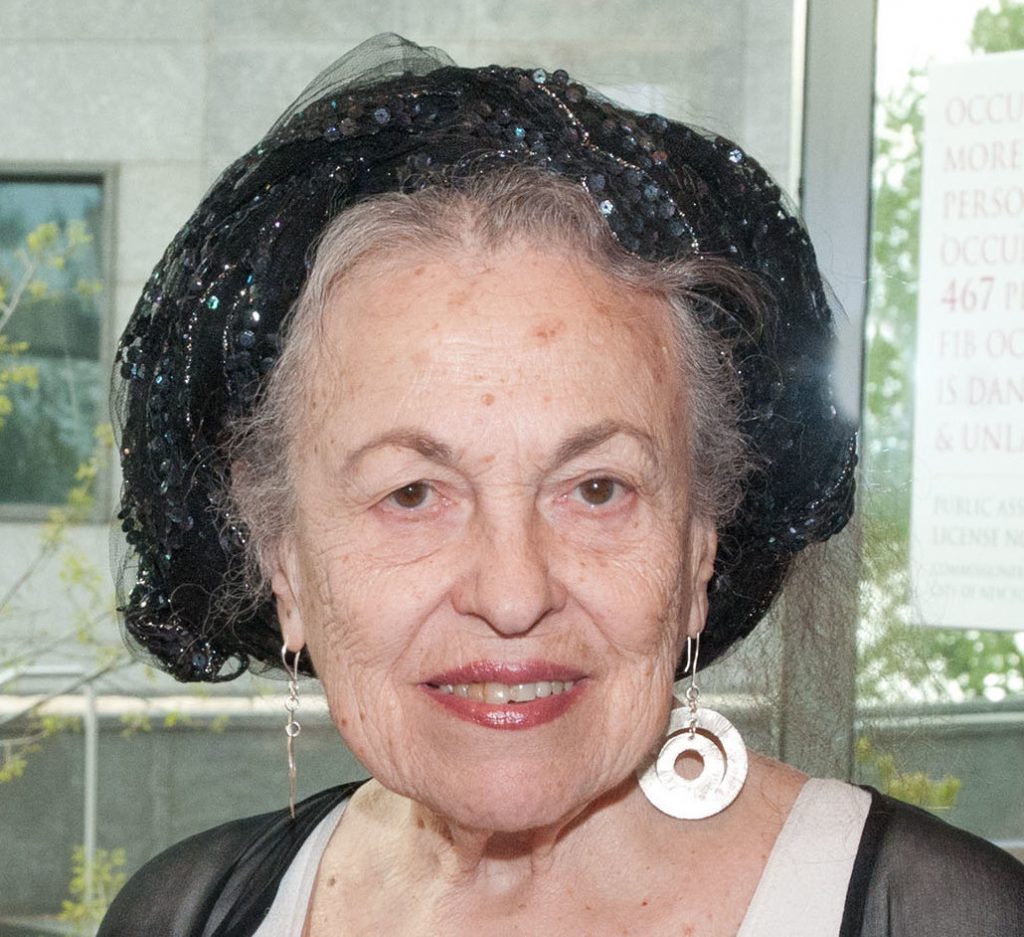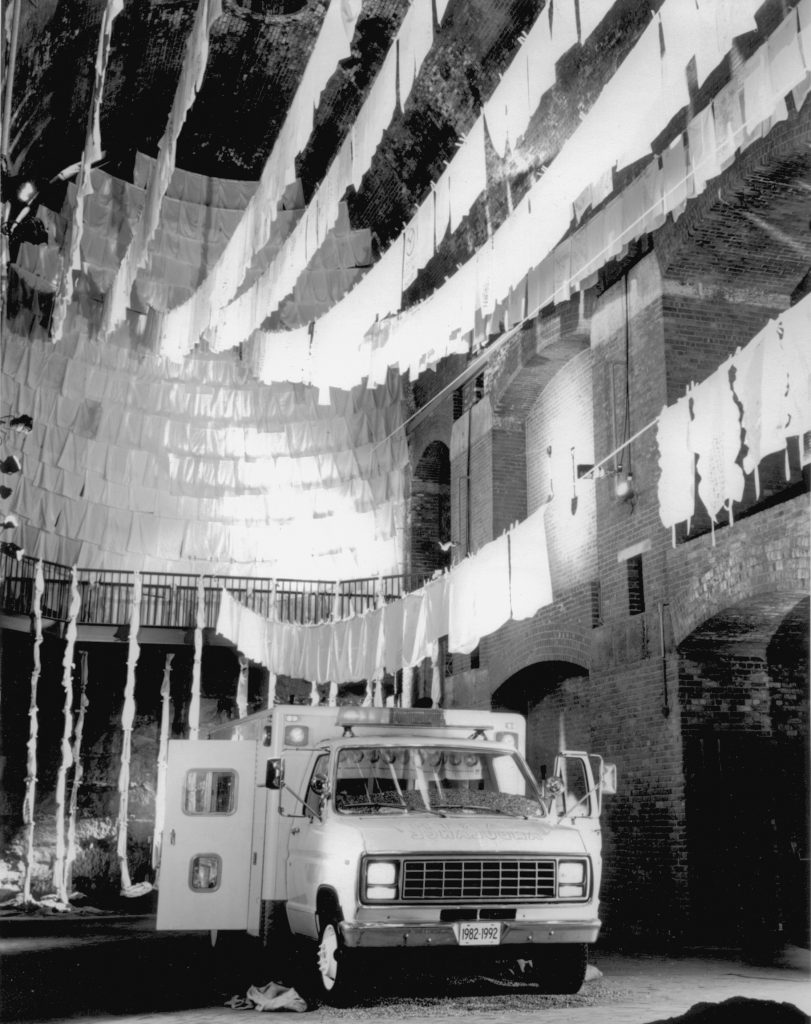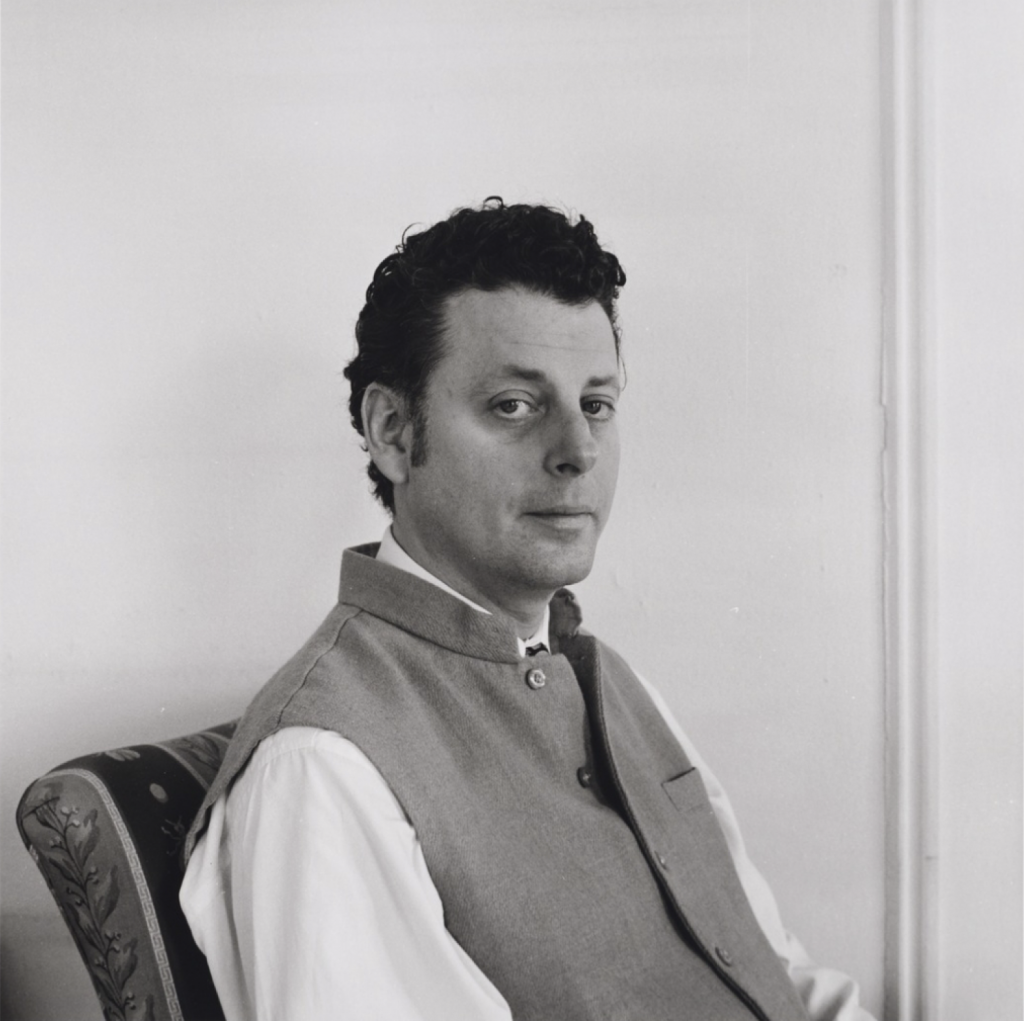Remembrances: Michael Sorkin, Helène Aylon, Maurice Berger
Reflections on lives lost to Covid-19.
In this time of mass death and deep grief, Jewish Currents will be publishing occasional remembrances of those we have lost. Through brief, personal reflections, we hope to pay tribute to some of the people our communities are grieving, and to celebrate their lives and work.

Michael Sorkin (1948–2020) was the first friend I lost to Covid-19. Michael, who died on March 29th, was an award-winning designer of urban spaces; a critic with more than 20 books and scores of essays to his name; the long-serving director of the Graduate Program in Urban Design at City College of New York; and an activist who organized against border walls, prisons, and gentrification. I knew him first as a fan and eventually as a collaborator. We planned projects for a future that did not include what was about to happen to the world, to our city, to him.
I’ve been missing Michael in tandem with the city we loved. The streets of New York are nearly still, but the hospitals are overflowing. The most common sound outside my window is the wail of an ambulance, whose cry is more heartbreaking than ever. I first read Michael’s most recent book—the extraordinary 2018 collection What Goes Up: The Rights and Wrongs to the City—in May of that year at a crowded table in the palatial reading room of the New York Public Library’s main branch, surrounded by hundreds of readers, researchers, and scribblers, none of whom sat six feet apart. In the days after his death, I reread his odes to urban vitality alone, self-quarantined in my room in Brooklyn.
What Goes Up’s short, topical essays span issues of city life, built forms, human rights, the righteousness of rebellion, the joys of pleasingly anarchic city blocks and the pains of those designed purely for profit. The book also includes loving memorials for friends, artists, and activists whose work reshaped cities—especially poignant now, in Michael’s absence—as well as more experimental works. One such piece, a manifesto titled “The Sidewalks of New York,” presents a legal framework for transforming city sidewalks (expanded to include at least half of the street space now consumed by cars) into maximally public and egalitarian places. It begins: “1. The Streets belong to the people! 2. So do the Sidewalks.” By point 20, Michael’s schema demands that 25% of revenues from commercial activity on rich blocks’ sidewalks be “tithed” to a centralized Block Bank for redistribution to poorer areas. In another piece, “Two Hundred Fifty Things an Architect Should Know,” Michael’s inventory of essential knowledge ranges from the practical (“How to lay bricks”) to the poetic (“Creation is a patient search”) to the political (“Who pays”; “Who profits”).
Another item on his list stands out in light of his recent battle with Covid-19: “The germ theory of disease.” Scattered throughout the book are references to illness and health, demonstrating Michael’s understanding of the relationship between public health, urban politics, and the built environment. In “Back to the ‘Burbs,” he redirects the invective typically hurled at cities toward the North American suburb, which he characterizes as a “festering swamp of ill health and indolence.” Elsewhere, Michael invokes massive healthcare mobilizations as spurs to reimagining the ways we live. In “Occupying Wall Street,” he writes,
The idea that a social manifestation might not simply take place in a city but actually create one is an originary vector for the mass gathering, and there is a special power that flows from occupying the city as we know it with another city—the city as we’d like it to be. This practice has a history of millennia, revealed in festival days, the ordered response to epidemics, as well as in the evanescent redistributions of power and privilege of political uprisings.
It seems that Michael saw “the ordered response to epidemics” as an opportunity to remake the city as we want it. His words remind us that now is a time to recommit to radical politics, rather than allow the forces of reaction to seize the moment.
What Goes Up closes with a call for public human interaction. “We move to live,” Michael writes, “to experience the other, to engage with pleasures of place, to collaborate, to enjoy happy accidents of encounter, and to enlarge the space of the political, which demands the verifying integrity of the face-to-face.” My response after rereading that passage was: oy vey. What Michael prescribes is exactly what we must forego, for now, in order to survive. But his vision of the city survives quarantine; it’s made manifest in the mutual aid networks, the acts of neighborly care, and the campaigns to cancel rent and fund social housing that are bubbling up in our city and beyond.
Though Michael doesn’t write much about being Jewish in What Goes Up, this was something else we shared. Jewish law encourages physically congregating to mourn our loved ones; the current impossibility of such gatherings is yet another thing to mourn. Zoom meetings and phone calls are no substitute for sitting shiva. I wish I could join with others who knew Michael to share stories, offer tributes, and comfort one another. I owed Michael a martini—his joking request after he offered a blurb for my book. I regret that I never delivered. Instead, I offer this toast: to Michael Sorkin, antifascist, internationalist, defender of cities and offender of plutocrats. His life has ended, but his memory will always be a blessing.
—Samuel Stein

TWENTY YEARS AGO, in a conversation with Rabbi Rolando Matalon published in Bridges: A Jewish Feminist Journal, the ecofeminist installation and performance artist Helène Aylon (1931–2020) made a searing proposal: Jews should stop reading Torah in synagogue. “There comes a time when we can no longer tolerate these words,” she said. “Because we yearn for sacred words, we’ll make any excuse for the abusive words of Moses, protecting Moses more than our daughters.” At the time, I was Bridges’ editor, and I recall the shock—and connection—I felt reading these words in an early draft of the conversation. Helène told me she had trembled during the exchange, as she wondered whether even Bridges—known for publishing radical feminists—would publish her words. But I loved her proposal, and her for making it. I had never met another Jew who felt the same way as I do about the thorough-going misogyny of our inherited text, or who took as seriously the necessity of doing something more drastic than re-interpreting it.
Helène was a touchstone for me through ten more years of editing the journal, and her work was published in Bridges five more times. The journal’s permanent cover was an image of her work The Book That Will Not Close, an altered Tanakh in which each page is coated and stiffened so that the volume could neither open nor close. Bridges’ final issue, released in 2011, included a conversation between Helène and her friend, the memoirist Rachel Berghash. Helène never forgave me for Bridges’ demise. She ended each correspondence with me: “I miss Bridges.” I will miss her even more.
Helène, who died in New York City on April 6th of complications related to Covid-19, began life in an Orthodox community in Brooklyn, attending the Shulamith Yeshiva for girls in Borough Park. She didn’t devote herself to creating art until the age of 30, when her husband passed away. Though her radical ideas challenged Orthodoxy, she had a unique ability to infuse her wildly iconoclastic creative work with intimacy and love for her home community, where many of her family still live.
In the ’70s, Helène was a “process artist,” creating works that painted themselves. Her 1979 series Formations Breaking, for instance, was made by pouring linseed oil onto a large panel, leaving the oil to pool and form a membrane over a period of time. She then directed “midwives” to raise the panel allowing the sac-like membrane to break, releasing the oil contained within it. The results were the materials’ answer to her question, repeated again and again throughout her life: What would happen if . . . ?

Years before I knew Helène, when I was a young lesbian feminist activist in St. Louis, I had heard of the “pillowcase project,” for which an artist was collecting the dreams of women from around the world, drawn on pillowcases. This was Helène in the ’80s, when she imagined, created, and drove an “Earth Ambulance” around the United States, gathering dirt from nuclear bases, uranium mines, and reactors across the country, which she stuffed into some of those pillowcases and carried down the steps of the United Nations on stretchers. She collected similar sacks in the Soviet Union—and later, as a commemoration of the 40th anniversary of the bombing of Hiroshima and Nagasaki, she brought pillowcases filled with rice, grain, pods, and seeds to Japan, where she set them loose in a river and filmed them as they floated, bumping into rocks and each other. When the sacks came to rest together at the end of their voyage, Helène saw a message of hope.
Her museum work attempted to capture these performances within the four walls of the institution, challenging the space itself. Her 2006 installation at the Berkeley Art Museum, Bridge of Knots—another work commemorating the anniversary of the bombing of Hiroshima and Nagasaki—consisted of the knotted-together pillowcases from the Earth Ambulance, the Soviet Union, and Japan, each inscribed by women and hung on the exterior walls of the museum, swinging in the wind like giant tzitzit (for those who would recognize them as such). This was signature Helène Aylon: radically feminist, activist, international, with explicit and hidden Jewish imagery.
Helène became well-known in the Jewish world in the mid-’90s, when her installation project, The Liberation of G-d, toured with the Jewish Museum’s Too Jewish? exhibition, which also featured artists such as Art Spiegelman and Deborah Kass. The Liberation of G-d began with Helène highlighting each misogynistic phrase in the Torah in pink translucent marker. This project evolved over the next two decades and grew into The G-d Project: Nine Houses Without Women, in which each of the nine installations exposed patriarchy’s effects on Judaism.
For Helène, communicating with her traditional, Orthodox mother—who never asked questions about patriarchy herself—was part of the process of “liberating G-d.” Sections of The G-d Project include photos of Helène’s mother and grandmothers, looking on, seeming to ask, “Why are you doing this?” Sometimes, Helène told her audiences, they would gently take her chin in hand and say, “Enough already.” But other times they would smile and say, “What took so long?” In a retrospective presentation delivered last year, Helène recollects that, in her conversation with Rabbi Matalon, published so many years before in Bridges, she had asked him if she could unfurl a Torah scroll and let it drop from the balcony onto the bima. (“I love to watch things fall,” she added as an aside.) Rabbi Matalon had said no, she could not drop the Torah. But to Helène, it wasn’t the answer that mattered. She’d had the conversation; she’d asked the question that she needed to ask: What if?
—Clare Kinberg

Maurice Berger (1956–2020), who died on March 23rd from complications due to Covid-19, devoted his life to studies of race in visual culture and art. For those unfamiliar with his oeuvre, his monthly New York Times Lens Blog series “Race Stories” provides a comprehensive starting point. In a short documentary made when Berger received an award for this column in 2018, he succinctly captures the stakes of his work. “I see my New York Times pieces as exercises in pedagogy,” he said. “How do you teach the reader racial literacy through visual literacy?” He was drawn to the difficult work of critical introspection, of unlearning racism, of careful thinking about the contexts in which images are made and seen. His aim was to ask, and to invite us all to ask with him: Through what lenses do we do our looking?
I first encountered Berger’s work in the midst of research on the Photo League—a school, social group, and center for debate on social documentary photography. From 1936 to 1951, the League trained photographers to visually expose American poverty and racism. I came upon Berger’s contribution to the catalogue for the Jewish Museum’s 2012 exhibition Radical Camera: an essay titled “Man in the Mirror: Harlem Document, Race, and the Photo League.” The essay stands out among writings on the League for its willingness to critique the racial politics of the oft-romanticized League members—mostly white, secular Ashkenazi Jews, who largely overlooked how their own subjectivities affected the making of the work. In his essay, Berger takes on the Harlem Document—one of several “Neighborhood Documents,” group projects developed within League classes, in which students photographed the same places; the images were then exhibited as a representation of life in that neighborhood. Berger critiques the Harlem Document for its disconnection from black image and culture makers of the time, and highlights the harmful implications of the project’s focus on blight in a mainstream landscape already defined by such representations.
Berger’s sense of others’ blind spots emerged from a critical consciousness of his own positionality. Berger—who grew up in a low-income housing project on the Lower East Side with a Sephardic opera singer mother and an Ashkenazi accountant father—understood how forms of oppression intersect, and how they differ. “As a Jew, I have known anti-Semitism. As a gay man, I have known homophobia,” he wrote in a 2017 Lens Blog piece. “But neither has seemed as relentless as the racism I witnessed growing up—a steady drumbeat of slights, thinly-veiled hostility and condescension perpetrated by even the most liberal and well-meaning people.”
Throughout his life, Berger performed allyship without ostentation, never centering his own ego or career as he consistently offered structural critiques of liberal institutions. His work demonstrated an exacting eye for the seemingly invisible, routine decisions made in the process of showing and discussing art that serve to keep white supremacy in place. In his most catalyzing work—his now-landmark essay “Are Museums Racist?”, published by Art in America in 1990—Berger criticized The Decade Show: Frameworks of Identity in the 1980s, an exhibition organized and hosted by the Museum of Contemporary Hispanic Art, the Studio Museum in Harlem, and the New Museum. The exhibition—which was touted as an “unprecedented” collaboration between two culturally specific museums and one focused exclusively on the contemporary (with white leadership)—presented multidisciplinary work raising questions of sexuality, race, religion, age, history, myth, politics, and the environment. Berger argued that the show’s celebrated multiculturalism risked misrepresenting the actual racism of the art world of the 1980s, where major institutions still gave disproportionate attention to white artists. He observed that the New Museum’s “cramped” installation and scant wall text reduced “complex careers . . . to a single statement.”
But Berger didn’t just critique; he also passionately celebrated work he admired. He joyously studied image-makers across generations, from Gordon Parks to Nona Faustine, and—as Nayland Blake reflects in a tribute in ARTNews—he was a fierce advocate for emerging artists, many of whom have come to shape the discourse of contemporary art. Just last year, he curated a show with his husband Marvin Heiferman, Photography Now 2019: The Searchers at the Center for Photography at Woodstock, which dealt with the construction of identity in a “digital culture saturated with images.”
New, exciting collaborations were underway at the time of Berger’s passing. Maya Benton, a relatively new friend and collaborator of Berger’s, was recently consulting with him about her Jews and Photography Initiative, a research project and working group of scholars, archivists, curators, and critics that Berger had joined. Benton told me the Initiative will be “impoverished by the absence of his voice.” Berger, she says, was a “course corrector,” and his presence would have been invaluable for challenging the group. With the loss of Berger’s voice, there’s a new urgency to the task of practicing his methods: a simultaneous embrace of scrutiny and enthusiasm when examining how we got to where we are.
—Ariel Goldberg
Samuel Stein is the author of Capital City: Gentrification and the Real Estate State.
Clare Kinberg is the publisher and editor of the Washtenaw Jewish News, a monthly print newspaper. From 1990 to 2011, she was the editor of Bridges: A Jewish Feminist Journal.
Ariel Goldberg’s publications include The Estrangement Principle (Nightboat Books, 2016) and The Photographer (Roof Books, 2015). They are a 2020 Andy Warhol Foundation Arts Writers Grant recipient for their book in progress Just Captions: Ethics of Trans and Queer Image Cultures.
